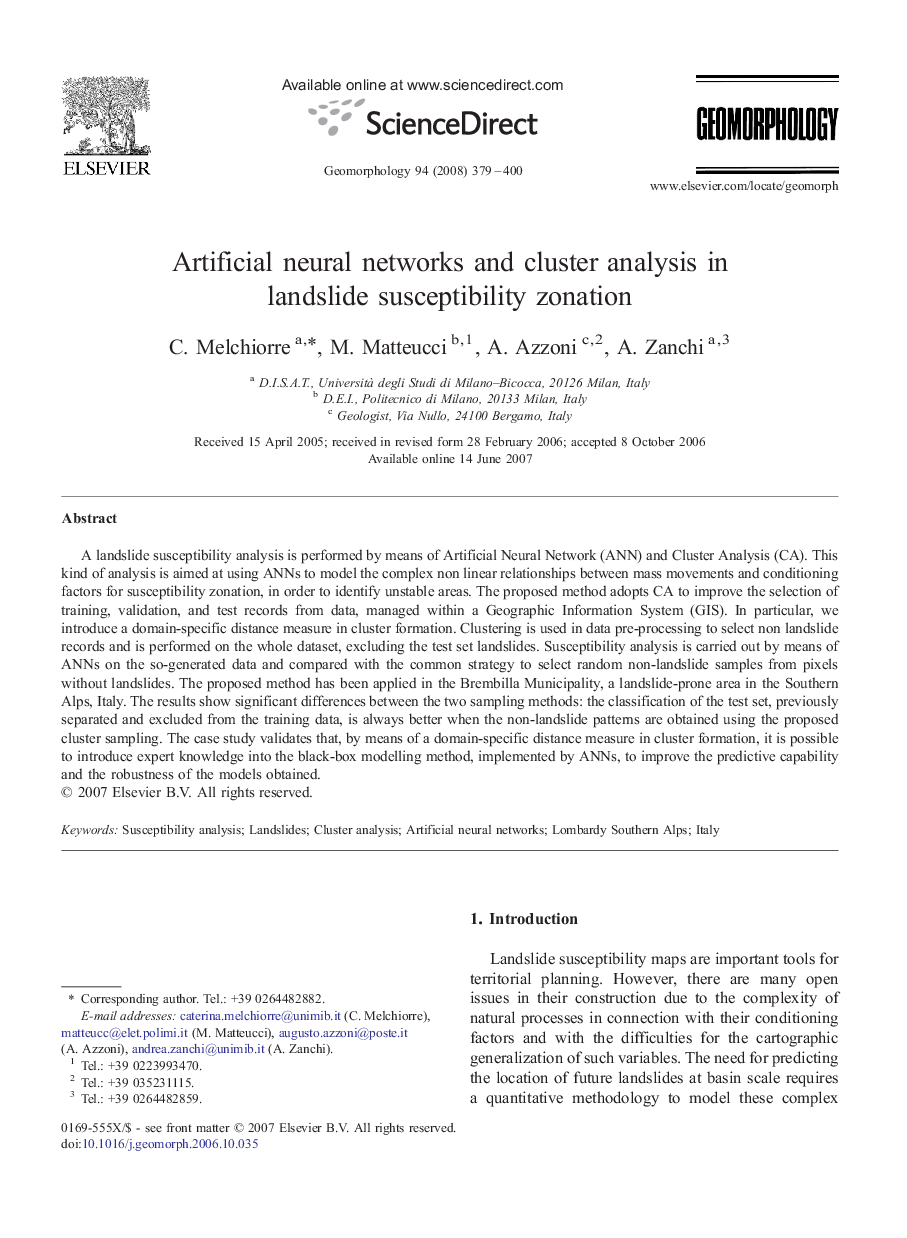| Article ID | Journal | Published Year | Pages | File Type |
|---|---|---|---|---|
| 4686846 | Geomorphology | 2008 | 22 Pages |
A landslide susceptibility analysis is performed by means of Artificial Neural Network (ANN) and Cluster Analysis (CA). This kind of analysis is aimed at using ANNs to model the complex non linear relationships between mass movements and conditioning factors for susceptibility zonation, in order to identify unstable areas. The proposed method adopts CA to improve the selection of training, validation, and test records from data, managed within a Geographic Information System (GIS). In particular, we introduce a domain-specific distance measure in cluster formation. Clustering is used in data pre-processing to select non landslide records and is performed on the whole dataset, excluding the test set landslides. Susceptibility analysis is carried out by means of ANNs on the so-generated data and compared with the common strategy to select random non-landslide samples from pixels without landslides. The proposed method has been applied in the Brembilla Municipality, a landslide-prone area in the Southern Alps, Italy. The results show significant differences between the two sampling methods: the classification of the test set, previously separated and excluded from the training data, is always better when the non-landslide patterns are obtained using the proposed cluster sampling. The case study validates that, by means of a domain-specific distance measure in cluster formation, it is possible to introduce expert knowledge into the black-box modelling method, implemented by ANNs, to improve the predictive capability and the robustness of the models obtained.
